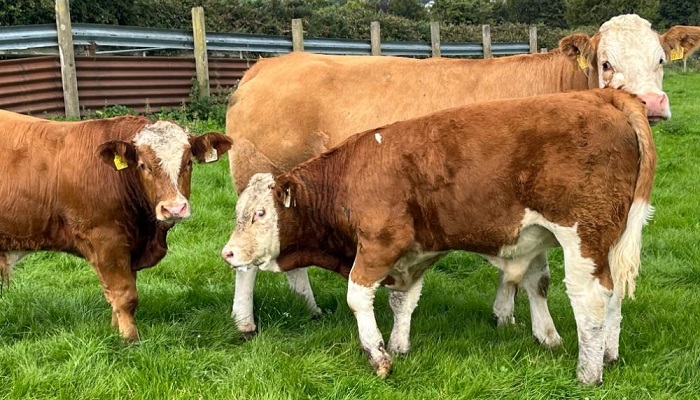13 September 2023
The September focus on John Pringle’s farm in Aughrim, Co. Wicklow, will centre on the implementation of health protocols prior to housing and weaning, Martina Harrington, Manager of the Teagasc Future Beef Programme, tells us more.
For the first time in almost five years, there is plenty of grass on John Pringle’s farm. The suckler calves are looking well and will be weighed for the Suckler Carbon Efficiency Programme (SCEP) in the first half of September.
It seems early but the September focus on suckler farms should be on transitioning cattle to the shed, especially weanlings. As part of this process on John’s farm, weanlings are vaccinated for IBR, RSV, Pi3 and Mannheimia Haemolytica and are dosed for lungworm and stomach worms; there is no fluke on the farm, so dosing for this parasite is not required. The vaccination programme is timed in such a way that animals have adequate immunity prior to both weaning and housing – two stress periods in the beef animal’s calendar.
Pneumonia and IBR
The IBR for all intents and purposes is simple, it is a live vaccine given into the muscle. It’s a one-shot programme and it gives six months protection. The onset of immunity takes two weeks, therefore it has to be given at least two weeks before a stress period.
The protection against RSV, Pi3 and Mannheimia Haemolytica is a two-shot programme. It has to be given four weeks apart and the onset of immunity take two weeks after the second shot, making the lead in time much longer.
John will start vaccinating on September 11th or thereabouts, giving the first shot of a pneumonia vaccine. The second shot has to be given four weeks later, which falls on October 9th. As the onset of immunity takes two weeks, the weanling will only have full immunity on October 23rd – in plenty of time before weaning or housing. The bull weanlings will be housed at this time. The IBR will be given with the second shot on October 9th and will cover the weanlings until April 9th.
Pre-housing dosing
John is lucky as he has no fluke on his farm; it’s a high and dry farm with no watercourses and no wet areas. He always checks the livers on his Beef Health Check reports from the factory, and also has all ewes or lambs slaughtered checked, just in case. This makes dosing at housing much simpler. Faecal sampling is also utilised on the farm to assess worm burdens throughout the year.
As a norm, the protocol is to give an Ivermectin injection when giving the second vaccination on October 9th as a pre-housing dose. This will kill any worms present. It also has a persistency that the white and yellow drenches do not have. It will control stomach worms for 2-3 weeks and lungworm for 4 weeks. The idea is to ‘clean out the lungs’ and allow them to heal from any damage in preparation for housing. If given on October 9th, you have up until October 30th to house and they should still be protected.
At housing they will have to be dosed for stomach worms, so another Ivermectin product is used. He can’t use a Levacide as it won’t control inhibited O. ostertagi – a stomach worm. The Ivermectin will also control both mange mites and sucking lice. They will get a second lice treatment 4 weeks after housing to deal with biting lice.
This article first appeared in the September Teagasc Future Beef newsletter. For more information on John Pringle’s farm, including an update on lamb performance, breeding and grassland management, click here.
